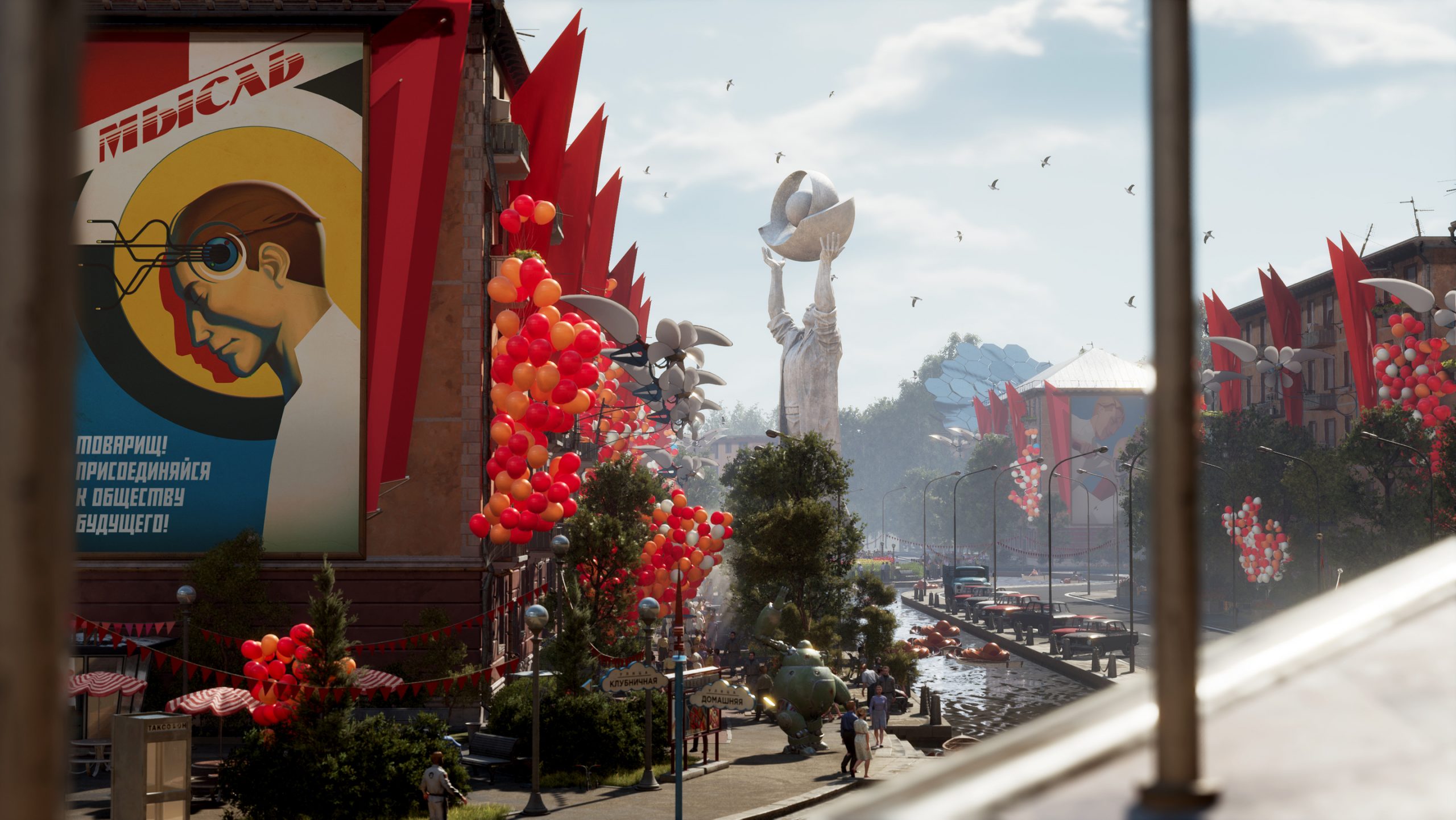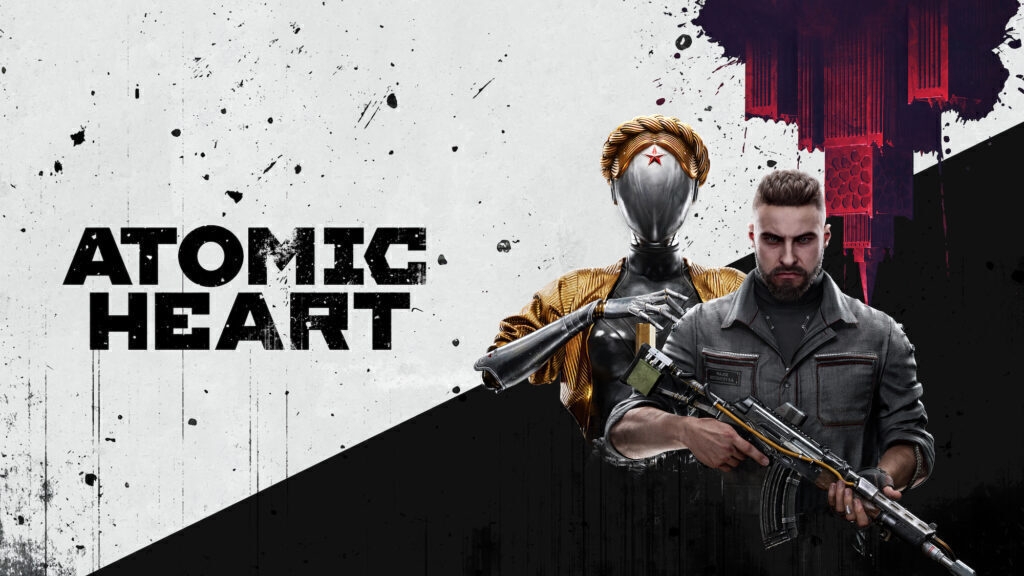Atomic Heart will surprise you with how good it is. The game's systems feel like they could have been deeper but that would have overwhelmed the story which, really, is the star here. Yes, the protagonist looks like a young Zangief and some of the humour is odd but that's the price of falling into (and shooting at) another culture.
-
Story
-
Gameplay
-
Replayability
-
Performance
-
Visuals
Atomic Heart is a surprisingly enthralling game. It’s an unusual collection of a very obvious set of influences – especially when it comes to gameplay, style and setting. If you’re a fan of the Bioshock series, Cyberpunk, Deus Ex, Fallout, Portal, and perhaps Wolfenstein, you should have this one on your radar.
Developer Mundfish is based in Cyprus but is comprised of a team from various Eastern European countries, including Russia, Poland, Ukraine, Armenia, and Serbia (among others). This might be why this first-attempt title manages to nail its setting in 1955 (kinda) Russia — the good old USSR — so squarely. It’s also why some of the humour might not hit as accurately as they were hoping.
The calm before the storm

The exposition-heavy opening sequence is cribbed straight from Bioshock Infinite. Players take the role of Agent P-3, Comrade Major Sergey Nechayev, reporting to one Dmitry Sechenov. Sechenov was the originator of Polymer, the substance that enabled the 1955 robotic Utopia that players are directed through in the opening minutes. It’s a long journey, with opportunities to learn about THOUGHT devices, Polymer, the various robotic and biological programs, and why life in the USSR is so fantastic. The intro might be why the Ukraine government wants the game banned (ironically insuring that it’ll stick around longer).
It can’t last, of course. Atomic Heart quickly segues from a glorious display of power and Communist productivity to a massive graveyard. Major Nechayev crashes his car (Natasha drops it — long story) and wakes up to find that the robots are revolting. As in killing every human being they can get their hands, blades, saws, lasers, or large lumps of steel on. Sechenov is still out there, remotely directing P-3 on how to recover the situation in time to launch Kollective 2.0, a neural system designed to link all of the USSR.
The problems with Communism
Atomic Heart drops players right into what can only be termed a dungeon. These are the narrative-focused sections of the game. Major objectives are mostly conducted in these unique areas — labs, theatres, museums… you get the idea. Following the lengthy tutorial level, where players are shown the stakes and most of what they need to achieve to succeed, an open-world component is introduced. This bit is solidly built but felt less compelling overall. The developers could have easily replaced the open-world sections with cutscenes and had a much tighter, more narrative-driven game. But then they wouldn’t have any place to put the Aperture Science Labs testing grounds.
Testing grounds are areas that take a little puzzle-solving to enter and more puzzle-solving to leave. They’re modelled heavily on Valve’s Portal and Portal II and they show where some of this world’s wild and wacky tech comes from. There are magnetic rooms, actual submarines, glowing orbs, rotating rooms, and plenty more to contend with. The puzzles themselves aren’t incredibly taxing but they’ll make you furrow your brow a time or two. The point is to unlock specific blueprints that can be used for upgrading your weapons. And you’re really, really going to want to upgrade your weapons.
Survival of the slickest
Upgrades work in two avenues. There are weapons — melee and ranged — which must first be constructed and then upgraded. This is a lengthy process that offers some very tangible benefits later in the game. Then there are Polymer abilities. While most of the Russian characters use THOUGHT modules — it’s a tentacle-like AI that fits on your temple — P-3 has CHAR-LES. Charles is a semi-sentient glove that offers context and advice. It’s also an integral part of the overall story, but you’ll get to that bit on your own.
P-3 can use bullets, lasers, and fire axes against enemies but he can also use Polymer abilities. The first of these is SHOK. It fires an electrical current at enemies and objects, obviously. But there’s also the ability to levitate (enemies), coat them in a conductive and flammable polymer, or use Polymer to shield P-3 from harm. Temporarily. These offer the potential to create some specific builds to take on the robotic/biological hordes with, but we stuck with SHOK while boosting P-3 health and energy capabilities. He’s quite a tank once you get to know him.
Russian it out the door
Gameplay is a combination of full-on assault combined with some not-so-optional stealth. Think Bioshock meets Deus Ex meets Fallout. Weirdly enough, the game wants you to be sneaky while outside. There are a limited number of enemies in the various interior dungeons and you’ll eventually overcome them — though players are very fragile early on. Outside, it’s easy to get swarmed and then it’s back to the last save point for another go at it. There are some objectives that must be completed out of doors but just travelling from point to point is potentially lethal. Happily, there are little mushroom huts where you can save your game and upgrade (more on that in a second) so you don’t lose all your progress.
There are also downbeats where the emphasis is on puzzle-solving. If you’re in a dungeon, this will almost always immediately switch to combat. If you’re in a testing site, that’s only an occasional thing. But expect movement and logic puzzles to stall your way throughout this RPG-flavoured shooter.
There are some elements of Atomic Heart that aren’t quite fully baked. The scenery is gorgeous but it does repeat occasionally. Some interior areas and testing sites have completely cloned rooms. The Polymer upgrades could have featured a deeper impact, gameplay-wise. Then there’s the story. It’s, surprisingly, great. But there are some moments where narrative logic breaks down — and we’re not talking about the psychedelic bits. The developers just skip over it and onto the next thing but it can be jarring.
Sense of humour failure
Another jarring item is some of the cultural humour featured in Atomic Heart. It’s always a possibility with games that are developed in a different region. Japan is famous for this. Even long-time fans aren’t catching every bit of humour presented in a Yakuza title, for instance. The same goes for Atomic Heart. Characters behave in ways that are difficult to understand. Some statements are supposed to carry gravity — it’s obvious from context — but the blow never lands. A Russian review of Atomic Heart‘s story would probably be a very revealing thing to read.
This is compounded by the setting. The USSR Utopia (what’s left of it) has a very specific feel that probably isn’t well known in the Western world. It’s bound to carry more meaning for those who were exposed to it over their lifetimes. We’re just peering into a small window, as it were.
But then there’s NORA, the vending machine AI. NORA’s personality is that of a masochistic woman begging a man (in this case, Agent P-3) to handle her roughly. The AI only acts this way with Comrade Major Sergey Nechayev. Other living humans that come within range are killed. It’s not immediately clear why this takes place but if you poke around the lore enough, you’ll find out why it happened. Still, it’s an attitude that feels out of place that probably makes sense if you’re Russia-adjacent.
Atomic Heart verdict
Atomic Heart is a stunning first game from Mundfish. We’re really hoping it sells because we’d love to see the studio take a second shot at something. Anything, really. The company’s made a few missteps but the level of polish and eye for detail is just incredible for an initial game. Players will want to find out why the world is the way it is and they’re given the tools to do just that. Sure, those tools are ballistic in nature but no revolution was ever won without a single bullet being fired.
